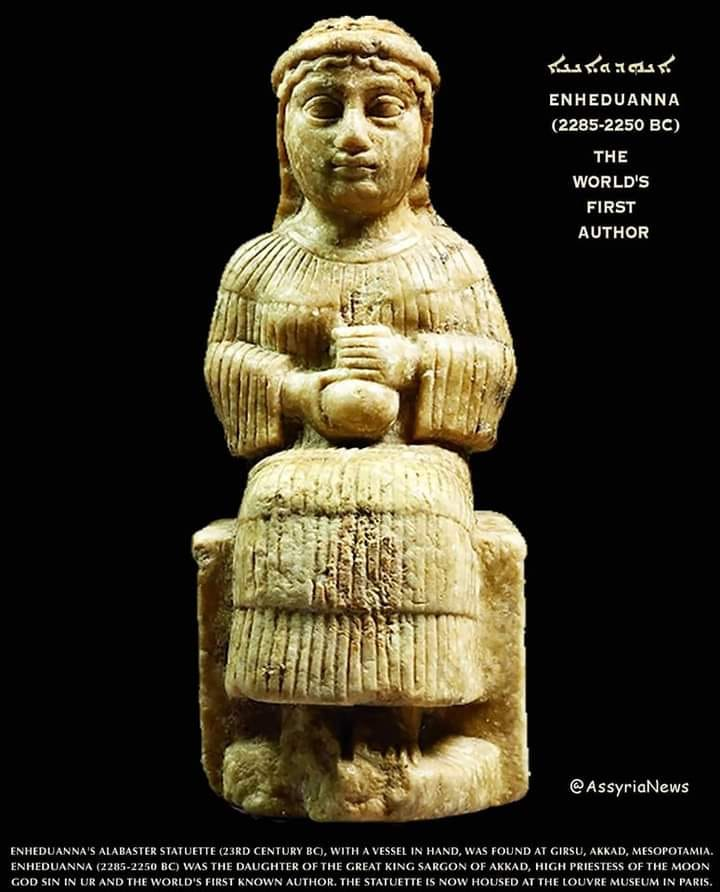Statue of Enheduanna or En-Hedu-anna

A small alabaster statue of Enheduanna (23rd century BC), with a bowl in hand, was found at Girsu, Akkad, Mesopotamia. Enheduanna (2285-2250 BC) was the daughter of the great King Sargon of Akkad, the high priestess of the moon god Sin at Ur and the world's first known author. The statue is now in the Louvre Museum in Paris.
Enheduanna (2285-2250 BC)
Her name is Enheduanna or En-Hedu-Ana, and (It means the high priest or priestess, and Hedo means adornment or garment, and its meaning is adornment of the high priest of the god An, and it is a name that refers to the god Nanna (Sin), the god of the moon).
She is an Akkadian princess (daughter of King Sargon of Akkad, and her mother is a high-ranking priestess of the moon god Nanna (Sin))
The high priestess of the Sumerian moon god Nanna in the city of Ur (the oldest known figure to hold this title), a position of important political privilege that was usually held by the daughters of kings.
Enheduanna is the aunt of the Akkadian king Naram-Sin and is one of the oldest women known by name.
Literary and historical scholars consider her the oldest woman writer and poet of love and sex. Enheduanna reached the highest priestly rank in the third millennium BC. She was appointed by her father, King Sargon of Akkad, and she had a prominent role during the rule of her father and mother, Queen Tashlultum.
She left a group of literary works that include poems dedicated to the goddess Inanna and a group of hymns known as “Sumerian temple hymns.” They are considered the first attempts at systematic divinity, and some scholars, such as William Hallow and Van Dyck, attribute certain works to her even though they were not explicitly mentioned by name.
Source: websites

